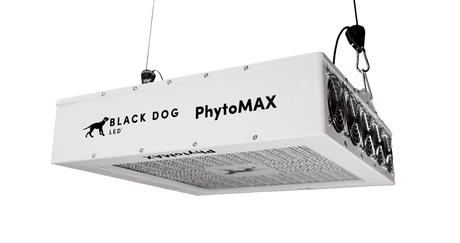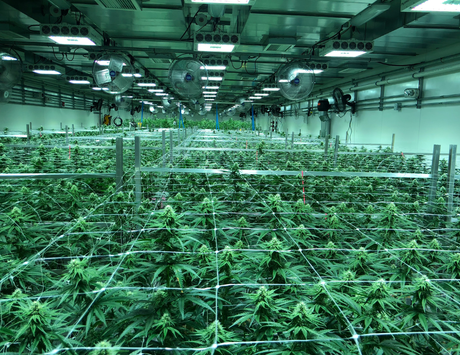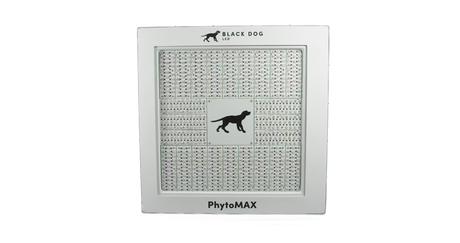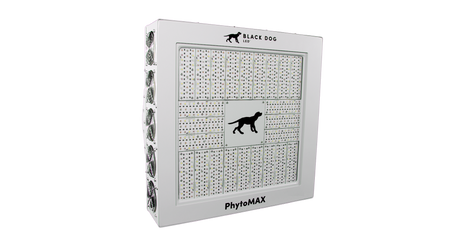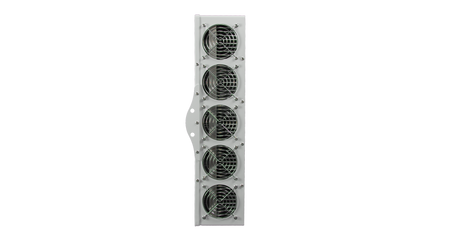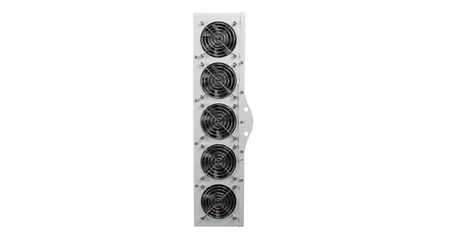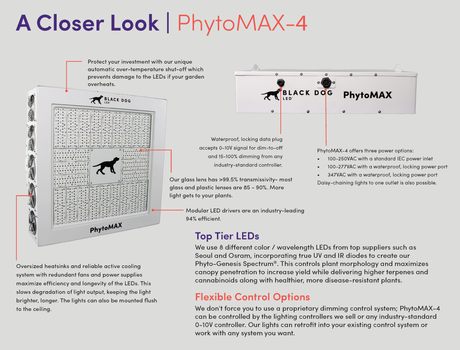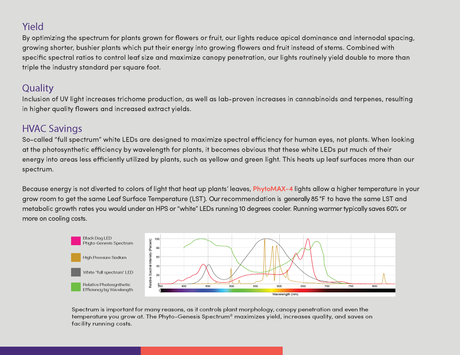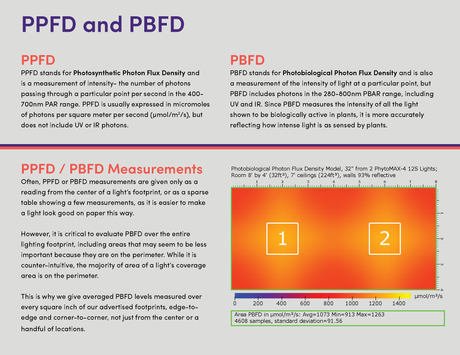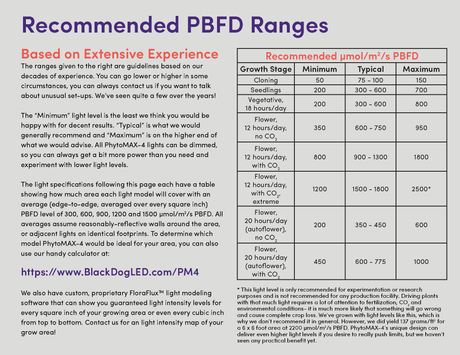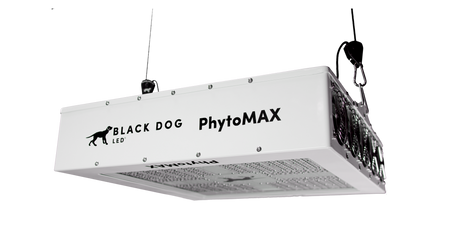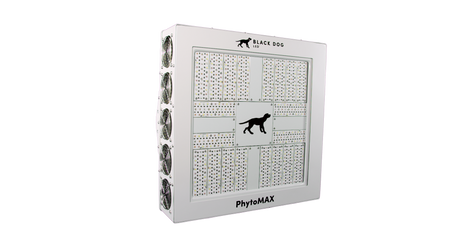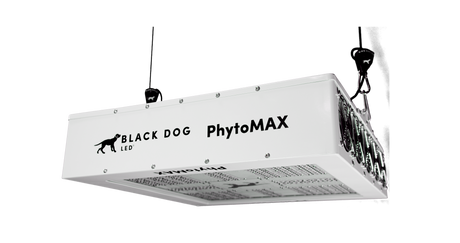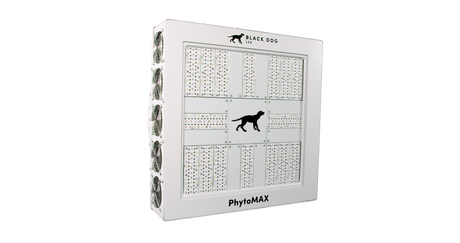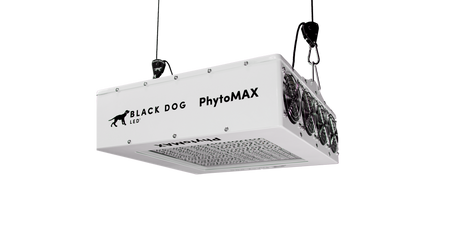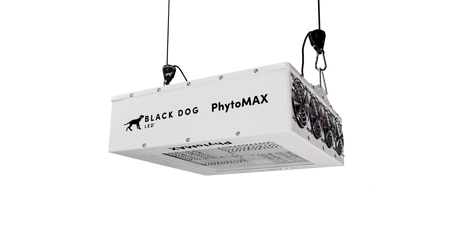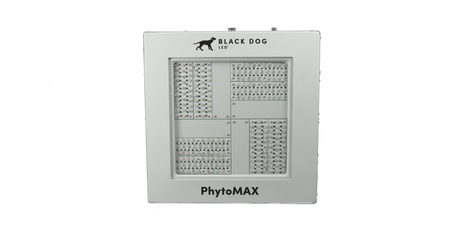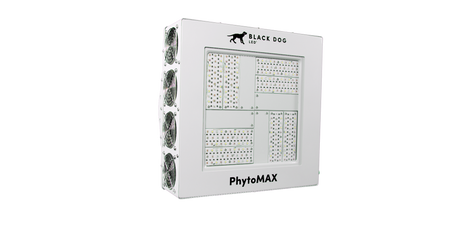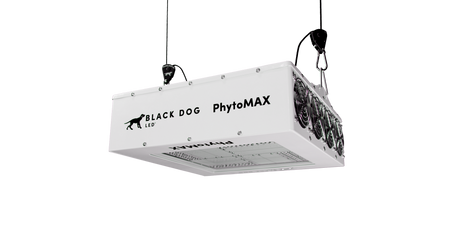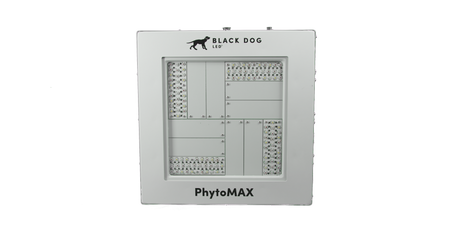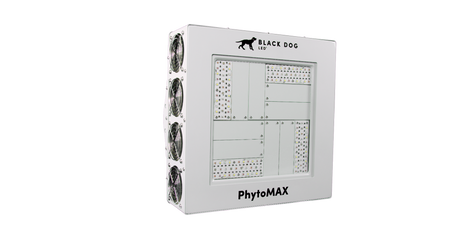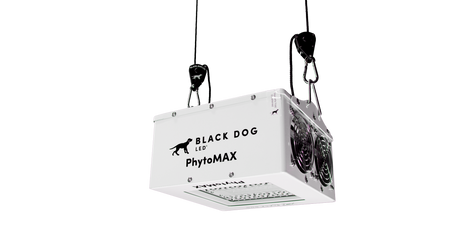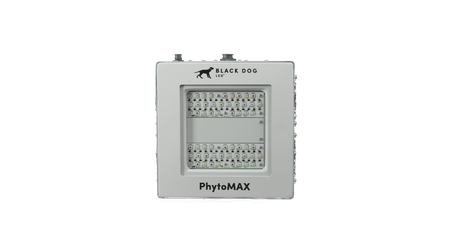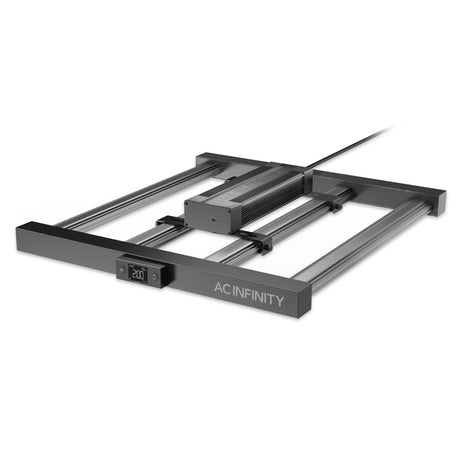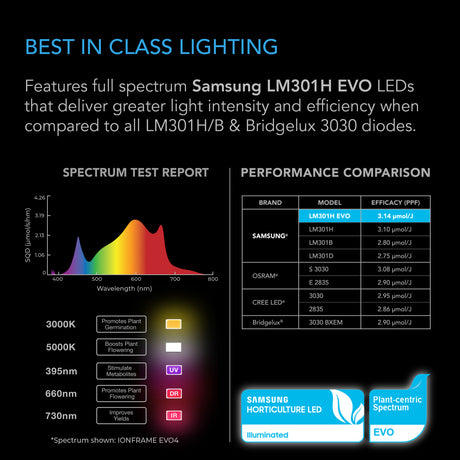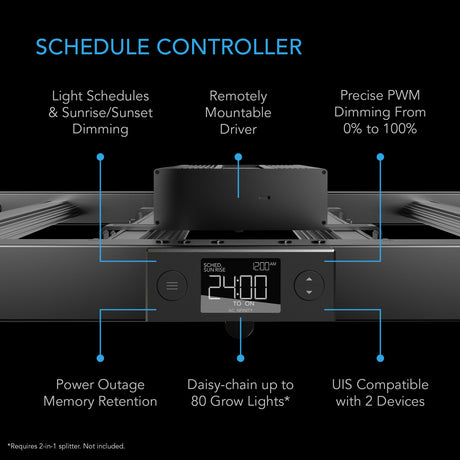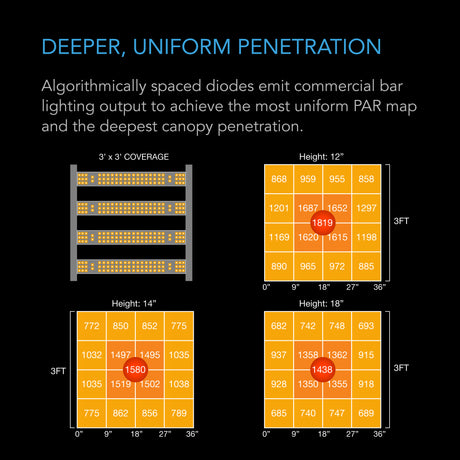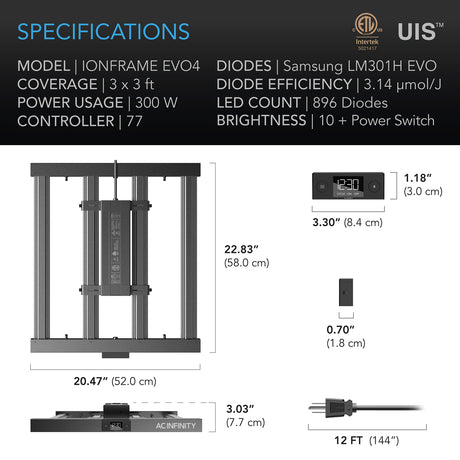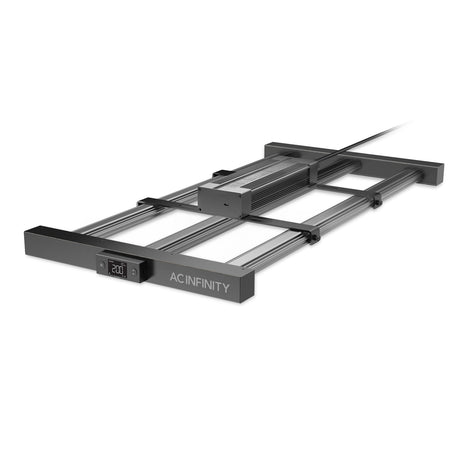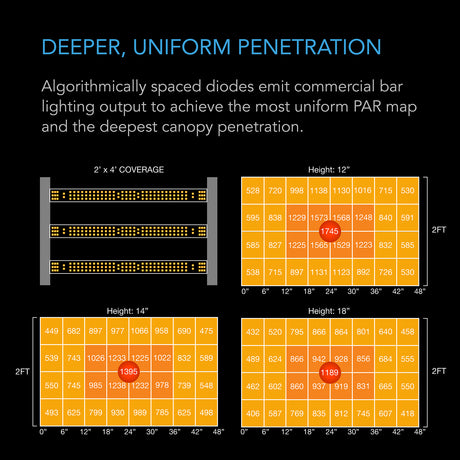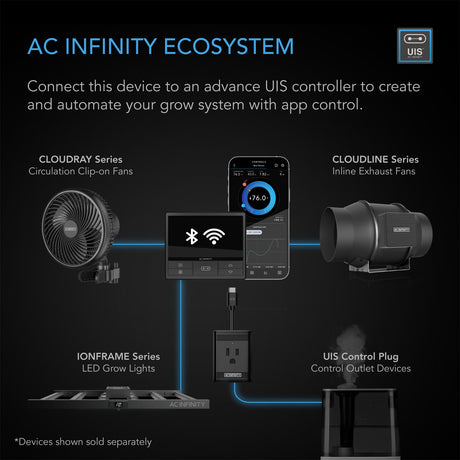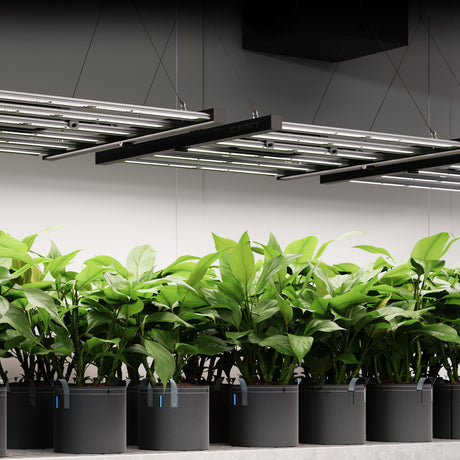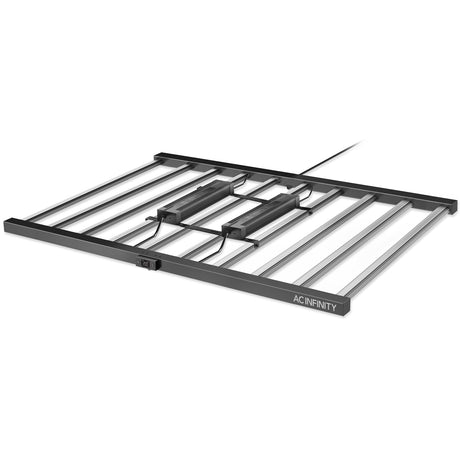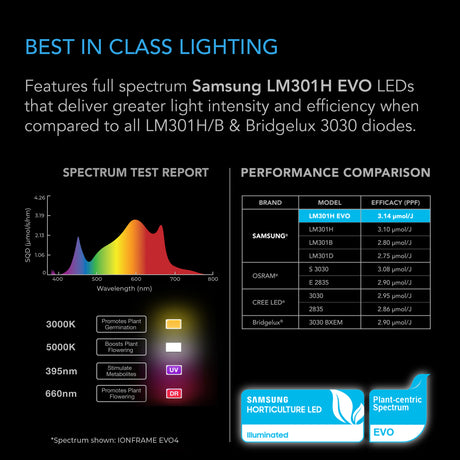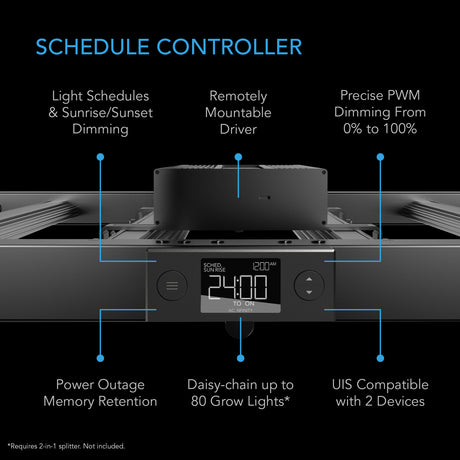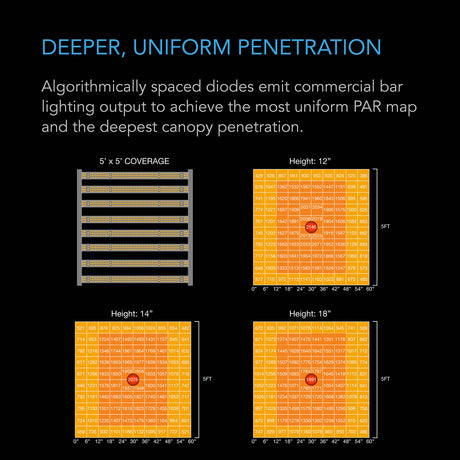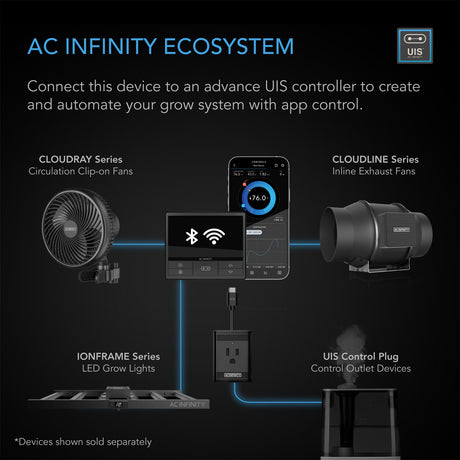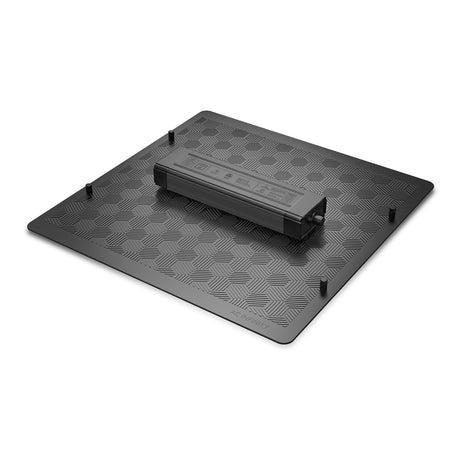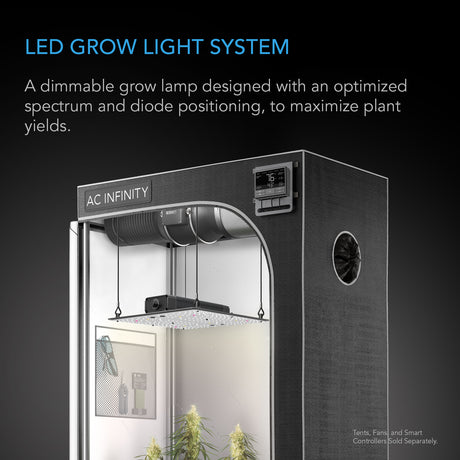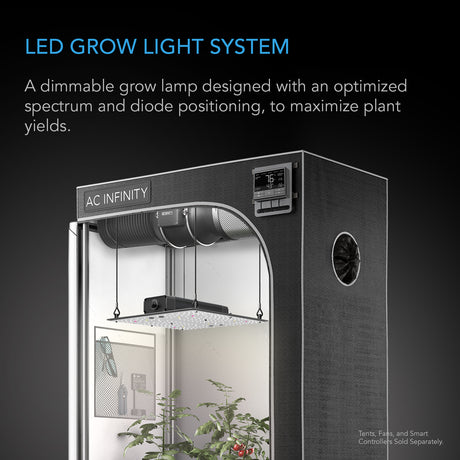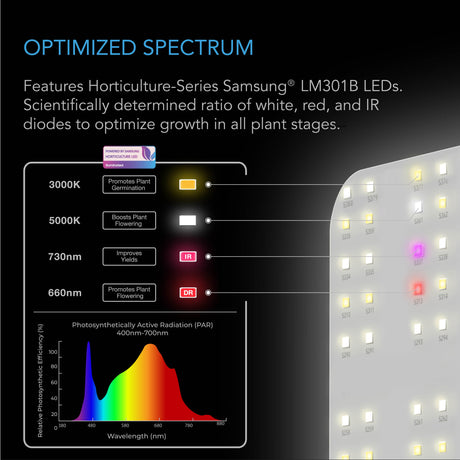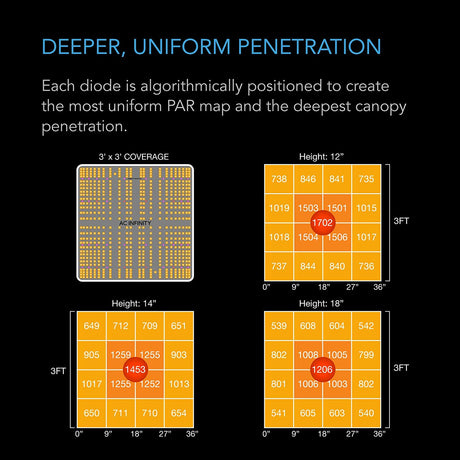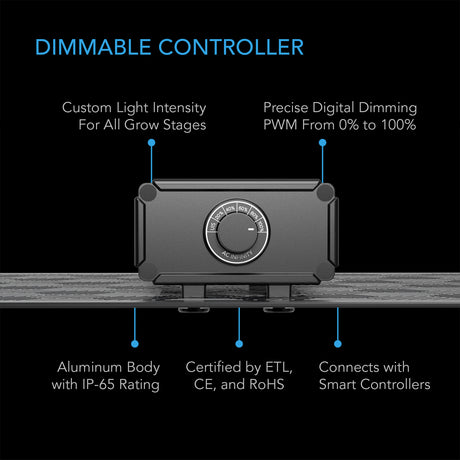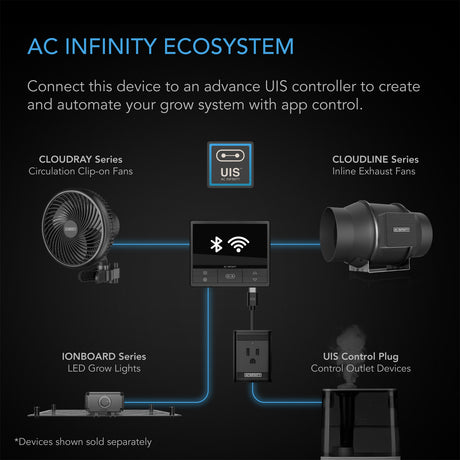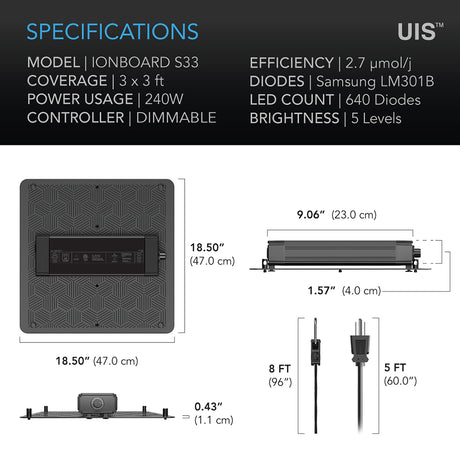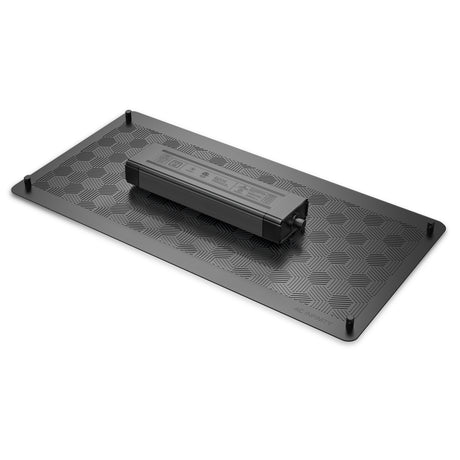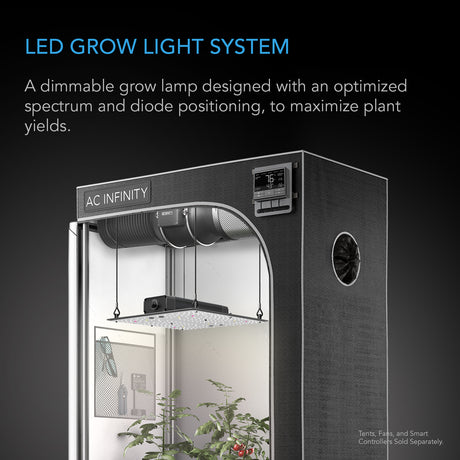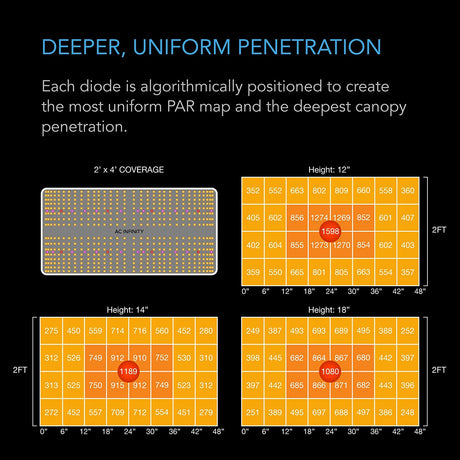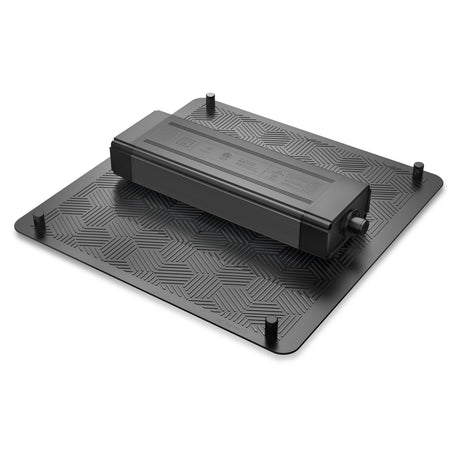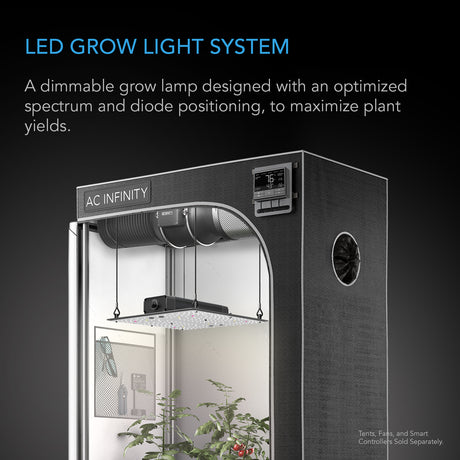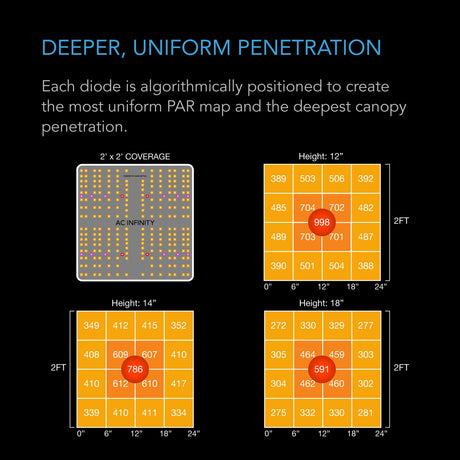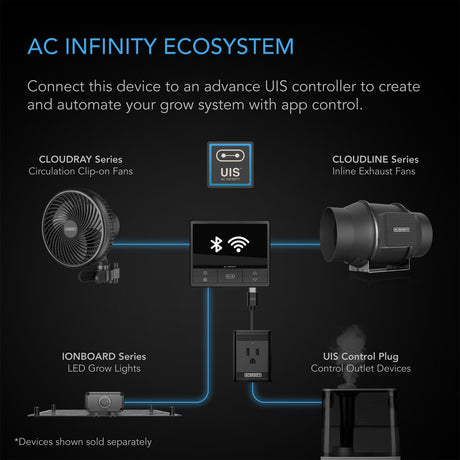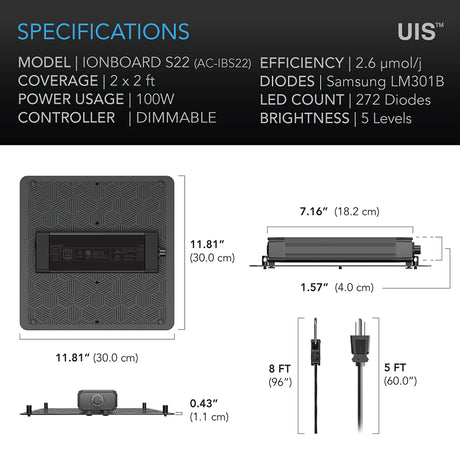How does wattage relate to light intensity and coverage in LED grow lights, and what factors should be considered when selecting the appropriate wattage for a cultivation environment?
How does wattage relate to light intensity and coverage in LED grow lights, and what factors should be considered when selecting the appropriate wattage for a cultivation environment?
- Extra 5% Off
AC Infinity
AC Infinity IONFRAME EVO4 Commercial LED Grow Light 300W
In stockSale price $36900 Regular price $44900Unit price /Unavailable - Extra 5% Off
AC Infinity
AC Infinity IONFRAME EVO3 Commercial LED Grow Light 280W
In stockSale price $32900 Regular price $39900Unit price /Unavailable - Extra 5% Off
AC Infinity
AC Infinity IONFRAME EVO10 Commercial LED Grow Light 1000W
In stockSale price $99900 Regular price $1,29900Unit price /Unavailable - Extra 5% Off
AC Infinity
AC Infinity IONBOARD S33 | Full Spectrum LED Grow Light 240W | Samsung LM301B | 3x3 Ft. Coverage
In stockRegular price $27900Unit price /Unavailable - Extra 5% Off
AC Infinity
AC Infinity IONBOARD S24 | Full Spectrum LED Grow Light 200W | Samsung LM301B | 2x4 Ft. Coverage
In stockRegular price $25900Unit price /Unavailable - Extra 5% Off
AC Infinity
AC Infinity IONBOARD S22 | Full Spectrum LED Grow Light 100W | Samsung LM301B | 2x2 Ft. Coverage
In stockRegular price $15900Unit price /Unavailable - Extra 5% Off
AC Infinity
AC Infinity IONBEAM S16 | Full Spectrum LED Grow Light Bars | Samsung LM301H | 16-Inch
In stockRegular price $9499Unit price /Unavailable - Extra 5% Off
AC Infinity
AC Infinity IONBEAM S11 | Full Spectrum LED Grow Light Bars | Samsung LM301H | 11-Inch
In stockRegular price $8499Unit price /Unavailable - Extra 5% Off
AC Infinity
AC Infinity IONBEAM U2 | Targeted Spectrum UV LED Grow Light Bars | 2-Bar Kit | 11-Inch
In stockRegular price $6299Unit price /Unavailable
